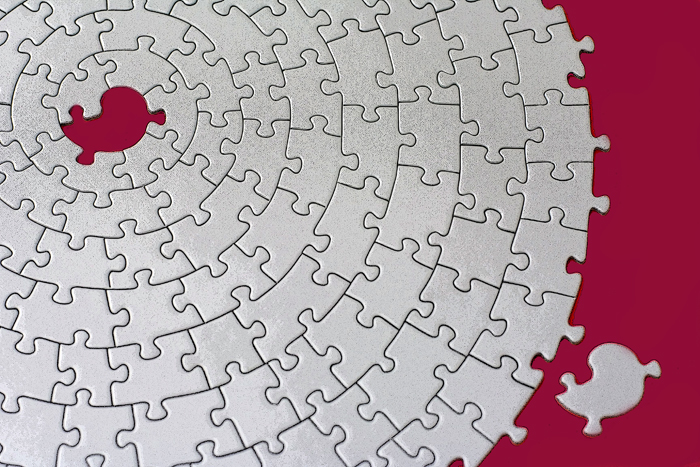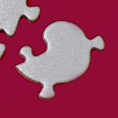The group method of analysis refers to any group work which includes an analytic function, inspired by psychoanalytic principles as well groupanalytic ones. It starts from the fact that the human being is in essence a radically social being, and that the group is the matrix of the mental processes of the individual, which in turn are of a transpersonal nature.
Just as psychoanalysis has the aim of making conscious what is unconscious, the group method of analysis aims at overcoming the resistances to cooperative functioning, which includes psychoanalytic considerations; in other words, it aspires to promoting an analytic attitude which facilitates the establishment of social contexts which in turn permit the study of sociological, psychological and biological factors that interfere with the capacity of cooperative action of the human being as an individual and as a species within its ecosystem.
It is a methodology that can be taken on board by anybody who endorses these ideas or the ones following from them. In this sense, it not only addresses professionals from the therapeutic ambit but anybody interested in the process of change, individual or social. The group method of analysis entails interdisciplinary cross-fertilization that does not imply the loss of the original professional identity, something most important in approaching present social problems.
It is not easy to neither explain nor understand the implications of “the group method of analysis”. While we were debating about what texts could shed light on this question, we became aware that any approximation could only contribute a part of the meaning. The image which emerged in the group was the one of a puzzle, so we decided to identify at least what seemed to be the most relevant pieces of the puzzle. Here are the pieces which we are finding; to construct the puzzle and give it meaning depends on every reader, his resources and experience. We invite you to construct your own approach to what is the group method of analysis.
 Communication
Communication
is a key piece of the jigsaw puzzle of the group method of analysis
- Introduction to “Study of Communication in a Group by a Group” S.H. Foulkes, 1948
This paper of S. H. Foulkes is a foundational paper by antonomasia which investigates communication in a groupanalytic group.
The groupanalytic group
is a characteristic piece of the jigsaw puzzle of
training of the groupanalyst.
- “Bilbao 1974-1999: Discussing the human group ” Hanne Campos, 1999
This paper takes up the diagram elaborated by S. H. Foulkes and the group of the Preparatory Commission of the International Congress of Mental Health in 1948 in London, which studied the relationship between a more institutionalized communication, usual in more structured groups like a didactic class, and a more spontaneous communication prevailing in unstructured groups as is the case of a groupanalytic group. I use this diagram to visualize the progressive institutionalization of the groupanalytic training program in the geographic area of Bilbao during the first twenty-five years of its development. I suggest the hypothesis that actually this phenomenon occurs generally in all types of training programs and training institutions.
Interdisciplinarity
is the most complex and complicated piece of the jigsaw puzzle of group analytic practice,
although the most promising one in as much as a possible social change.
The introduction of Pere Mir to the work of M. L. J. Abercrombie and of Hanne Campos to the work of Sheila Thompson facilitates our understanding of groupanalytic investigation in the educational area of different disciplines as are Medicine or architecture, and the ones of the helping professions as are Psychiatry and Social Work.
- Introduction to the work of Jane Abercrombie, by Pere Mir, 2009
- Introduction to the work of Sheila Thompson by Hanne Campos, 2009
Theoretical constructs
are also key pieces that shape the jigsaw puzzle of the group method of analysis.
The introduction by Hanne Campos to “A prototype of group model for psychoanalysis” by Juan Campos leads us to his concept of Professional plexus and to the differentiation he establishes between groups of identification, of pertaining/belonging, and of reference. The introduction by Mercè Martínez Torres presents “A conceptual diagram” enabling reflection about group analysis as a motor of individual and social change, created by her during the preparatory group work of a meeting/interview between Juan Campos and Malcolm Pines which she conducted as a Plenary session of the conjoint III Mediterranean Regional Conference of IAGP/SEPTG in 2008. In the words of Mercè: This diagram is useful for the reflection of anybody who trained, works and lives in groups.
- Introduction to “A Prototype of Group Model for Psychoanalysis: From the <Group of two> to the <Group of 2 + n persons>” Juan Campos Avillar, 1990
- Introduction of: “Group of Analisis: A social space of health”, Hanne Campos, 2002 (Doctoral Thesis)
- “A conceptual diagram to think about the group of analysis” Mercè Martínez, 2007-2013




